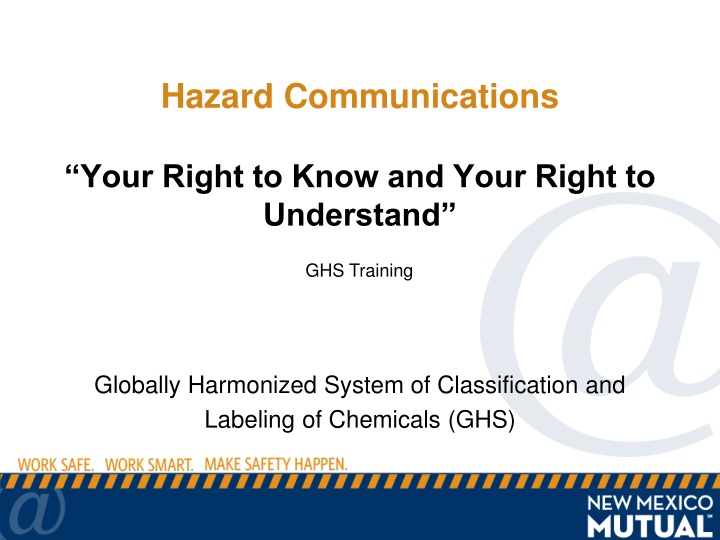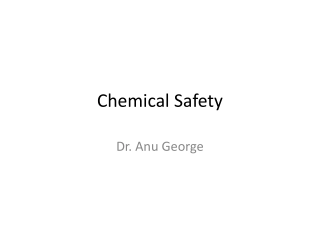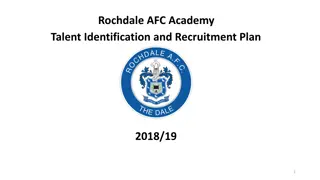
Hazard Communications and GHS Training Overview for Chemical Safety
Explore hazard communications and GHS training for chemical safety, including the Globally Harmonized System (GHS), chemical labeling, Safety Data Sheets (SDS), pictograms, responsibilities of manufacturers and employers, required elements on labels, and definitions of signal words and pictograms.
Download Presentation

Please find below an Image/Link to download the presentation.
The content on the website is provided AS IS for your information and personal use only. It may not be sold, licensed, or shared on other websites without obtaining consent from the author. If you encounter any issues during the download, it is possible that the publisher has removed the file from their server.
You are allowed to download the files provided on this website for personal or commercial use, subject to the condition that they are used lawfully. All files are the property of their respective owners.
The content on the website is provided AS IS for your information and personal use only. It may not be sold, licensed, or shared on other websites without obtaining consent from the author.
E N D
Presentation Transcript
Hazard Communications Your Right to Know and Your Right to Understand GHS Training Globally Harmonized System of Classification and Labeling of Chemicals (GHS)
GHS Training Overview Chemical Labeling Safety Data Sheets (SDS) Pictograms and Hazard Statements Summary
Objective for GHS Develop a harmonized hazard communication system, including: Chemical Labeling Comprised of six specific elements Safety Data Sheets (SDSs) Standardized 16 section format
Responsibilities Chemical manufacturers and importers: Required to evaluate hazards of chemicals they produce or import Prepare labels and safety data sheets to convey the hazard downstream to employers Employers: Provide labels and safety data sheets Train employees on hazardous chemicals Provide a hazard communication program
Hazard Communications Chemical Labeling Required Elements Information required on labels: Product identifier Signal words Pictograms Hazard statements Precautionary statements Name, address and phone number of the chemical manufacturer, distributor or importer
Hazard Communication Chemical Labeling Product Identifier
Hazard Communication Chemical Labeling Signal Words Definition: Word used to indicate the relative level of severity of hazard and alert the reader to a potential hazard on the label. Danger used for more severe hazard Warning used for less severe hazard
Hazard Communication Chemical Labeling Pictograms Definition: Graphical composition that includes a symbol and other graphic elements, such as a border, background pattern or color that is intended to convey specific information. Characteristics: Shape: Square set at a point Colors: - Symbol: Black - Background: White - Border: Red
Hazard Communication Chemical Labeling Hazard Statement Definition: A statement assigned to a hazard class and category that describes the nature of the hazard(s) of a chemical, including where appropriate and the degree of hazard. Hazard Pictograms Examples of hazard statements are: Highly flammable liquid and vapor Harmful if swallowed Harmful if inhaled Signal Word Danger Hazard Statement Highly flammable liquid and vapor. May cause liver and kidney damage.
Hazard Communication Chemical Labeling Precautionary Statements Definition: A phrase that describes recommended measures that should be taken to minimize or prevent adverse effects resulting from exposure to a hazardous chemical, or improper storage/handling. Precautionary Statements Four types: Prevention Response Storage Disposal Keep container tightly closed. Store in cool, well ventilated place that is locked. Keep away from heat/sparks/open Flame. No smoking. Only use non-sparking tools. Use explosion-proof electrical equipment. Take precautionary measure against static discharge. Ground and bond container and receiving equipment. Do not breathe vapors. Wear protective gloves. Do not eat, drink or smoke when using this product. Wash hands thoroughly after handling. Dispose of in accordance with local, regional, national, international regulations as specified. In Case of Fire: Use dry chemical (BC) or carbon dioxide (CO2) fire extinguisher to extinguish.
Hazard Communication Chemical Labeling Suppliers Identification Definition: The name or number used for a hazardous chemical on a label or in the SDS. Provides a unique means by which the user can identify the chemical. Product identifier: Proper shipping name Code Product Identifier CODE ____________________________ Product Name ___________________ Supplier Identification Supplier identification: Company name Address Emergency phone number Company Name_________________ Street Address ______________________ City _________________ State ______ Postal Code __________ Country ______ Emergency Phone Number ___________
Safety Data Sheets (SDSs) Similar to MSDSs, the SDS provides information on: 16 Section Format Chemical characteristics Safety and health hazards Precautions Disposal information Transport information
Safety Data Sheets: Your Rights Your employer must have an SDS for every hazardous chemical you use as part of your job Your employer shall ensure that they are readily accessible to all employees Electronic access and other alternatives are permitted as long as no barriers impedes the employee s access
Safety Data Sheets 16 Section Format
Hazard Communications Safety Data Sheets 10. Stability and reactivity 11. Toxicological information 12. Ecological information (non- mandatory) 13. Disposal consideration (non-mandatory) 14. Transport information (non- mandatory) 15. Regulatory information (non-mandatory) 16. Other Information 1. Identification 2. Hazard(s) identification 3. Composition/information on ingredients 4. First aid measures 5. Fire-fighting measures 6. Accidental release measures 7. Handling and storage 8. Exposure controls/personal protection 9. Physical and chemical properties
GHS OSHA Phases Remember that this is the only the first phase
Review Items covered are: New Mexico Mutual Website Chemical Labeling Safety Data Sheets (SDS) Pictograms and Hazard Statements Questions?
Risk & Safety Management Contact If you have any questions or would like Risk and Safety assistance with your policy, please contact us: Albuquerque area: (505) 345-7260 Toll Free: (800) 788-8851 P.O. Box 27825 Albuquerque, NM 87125 You can also email us at NMMSafetyAdvisor@NewMexicoMutual.com






















